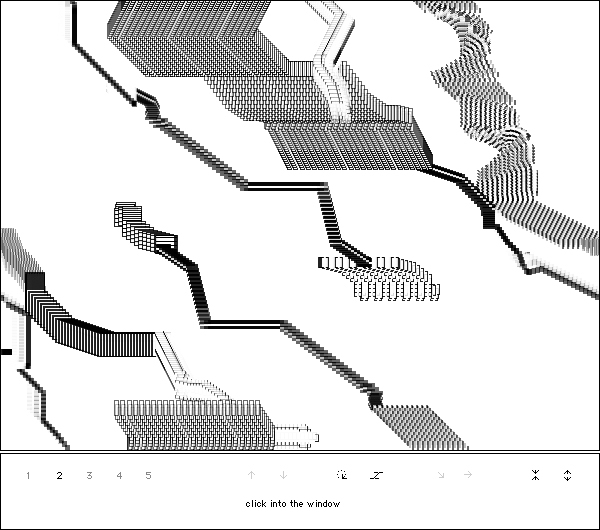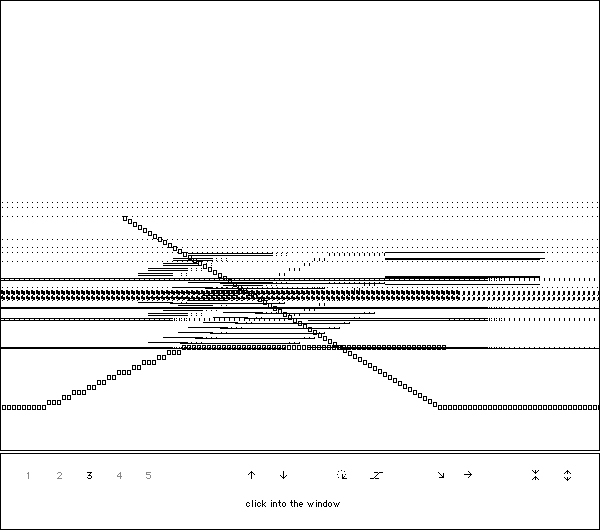v.e.r.t.e.x
Shockwave application, 600 x 531 px, 2003

© Snapshot, screenshot, v.e.r.t.e.x, 800 x 600 px, 2003
According to the editors of the Duden German dictionary, the word “vertex” stands for the common destination for the movement of a group of stars. Krautgasser appears to be emphasising the rela-tionship of the individual to a group with the use of dots to break up the word in the title to yield a formal solution. In the selection of the title and its conspicuous spelling is an early suggestion of the concept behind the work: simple graphical elements trace their routes in the PC firmament and repeatedly overwrite themselves, finally condensing into surprisingly complex visual structures reminiscent of an arbitrary pattern. Several reduced parallel graphic structures can be recognised in the development process, the formal construction/directional behaviour can be influenced by a number of parameters controlled by the mouse of the PC. Altogether, the repetitive graphical structures have a dynamic draw that concentrates after a while into a more static and complex form as a result of the overlapping of individual graphic layers. This more static form is permanently overwritten—i.e. finds itself in an ongoing process of development—even though it has found its figural structure. Using five basic forms to select from Krautgasser provides different visual as well as temporal forms of process for generating a “picture,” as well as the possibility to formulate very reduced final progressions, which she then uses as originals for multiple-part series of prints (TMP Serie). The intended variety of possibilities for the use of v.e.r.t.e.x. is surprising and successful in its features, the conceptual clarity recedes slightly in favour of this, which appears overall to be intended by the artist.
With this range of possibilities, I find the overlapping, overwriting, and transforming of the originally simple, then I find increasingly complex graphic elements and patterns in dense visual structures exciting as the building-up of an abstract image can be followed while it continually develops formally and quasi-themetises itself. When, after a while, the monitor—i.e. the support for the image—is almost entirely filled, the encroaching fixation of the “picture” going beyond the process of building-up an image raises issues relating to composition in general: more reminiscent of an engagement with classical painting; an open interplay between form and conception is reached that shows the history and development of abstract processes while keeping them topical.
(Sandro Droschl)

© Snapshot, screenshot, v.e.r.t.e.x, 800 x 600 px, 2003
DeutschEnglish
Exhibitions: • Abstraction Now, Künstlerhaus Wien, Wien/Vienna, A 2003 • coord(), Kunstverein Medienturm, Graz, A 2003 No: 03-003